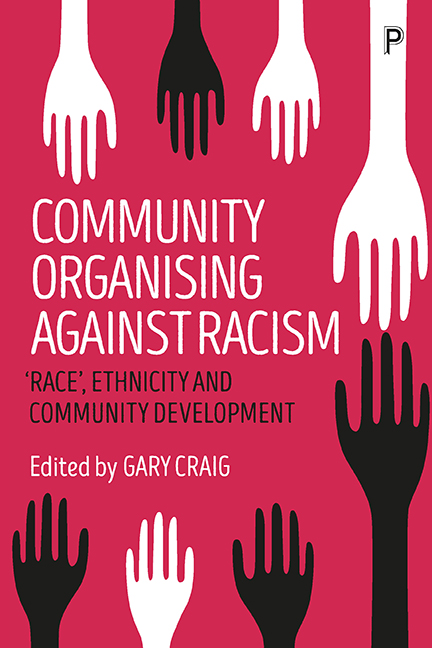Book contents
- Frontmatter
- Dedication
- Contents
- List of figures
- Author biographies
- List of abbreviations
- Introduction
- Section One Community development with ethnic minorities: history, theory, policy
- Section Two Building capacity with BME groups
- Section Three Working with Roma communities
- Section Four Global experience
- Section Five Working across cultural boundaries: ideological and personal reflections
- Afterword: Messages for community development in working with minority groups
- Index
Sixteen - Using arts and culture for community development in the United States
Published online by Cambridge University Press: 12 April 2022
- Frontmatter
- Dedication
- Contents
- List of figures
- Author biographies
- List of abbreviations
- Introduction
- Section One Community development with ethnic minorities: history, theory, policy
- Section Two Building capacity with BME groups
- Section Three Working with Roma communities
- Section Four Global experience
- Section Five Working across cultural boundaries: ideological and personal reflections
- Afterword: Messages for community development in working with minority groups
- Index
Summary
The United States (US) is a settler nation, populated over the past five centuries by settlers from throughout the globe who displaced and dispossessed much of the original indigenous populations. This history of conquest and conflict, with voluntary and involuntary populations settling our country, has shaped the current state of race and ethnic relations in the United States. Our census statistics tell us that the population of the US is becoming increasingly complex and diverse. The US Census Bureau projects that through to 2050 the proportions of all racial and ethnic minority groups (Asian, Hispanic, African American, American Indian) will increase, while the proportion of Non-Hispanic White people will decrease as a result of fertility, immigration and age-distribution patterns (US Census Bureau, 2010). These trends challenge community development projects to implement methods and approaches that will be effective in a more diverse landscape that engages with increasing cultural complexity. We need to create and develop methods that are grounded within specific cultural contexts and that can contribute to community methods, that can bridge differences in race, culture, religion and identity (Thompson et al, 2011; Deepak et al, 2015).
Although this chapter is focused on community practice in the United States, growing cultural diversity and conflict is a global phenomenon. The globalisation of capital, environmental threats, political conflicts, economic contractions and religious conflicts have contributed to large population shifts across borders (Parrott, 2009). Recent events involving significant migration from the Middle East, northern Africa, and southern Europe into the European Union (EU) and other more stable and economically viable regions is only one example of the ways in which many societies are becoming more racially and culturally diverse.
We argue here that the arts and other cultural resources can be powerful tools for community development work in this multicultural and multiracial context. However, work with arts and cultural institutions must be intentional and mindful of potential differences and conflicts. We begin with an overview of arts-based community development, present our perspectives on considerations when doing this work and provide examples of different ways in which we have carried out this work with communities in the United States.
Arts-based community development
Community development is a major undertaking and focus of many different disciplines, including social work, urban planning, community psychology and public health.
- Type
- Chapter
- Information
- Community Organising against Racism'Race', Ethnicity and Community Development, pp. 257 - 276Publisher: Bristol University PressPrint publication year: 2017



